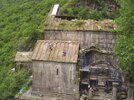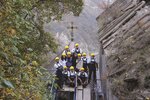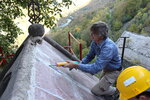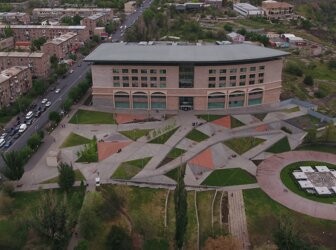Cultural Heritage Preservation Training in Armenia
Armenia is a landlocked Country with close cultural links to Europe and has an outstanding cultural heritage at risk. Cultural Heritage Preservation Training in Armenia project aims to promote a better environment for the safeguard of immovable and movable heritage through the ...
Read more
Project details
| Title: | Cultural Heritage Preservation Training in Armenia |
|---|---|
| Entr. year: | 2015 |
| Result: | Award |
| Country: | Armenia |
| Town: | Yerevan |
| Category type: | training |
| Architect / Proj.leader: | Education, Training and Awareness-Raising , Arch. Gaianè Casnati, Project leader |
| The Jury's citation: | "What made the strongest impression on the Jury here was the effectiveness of the partnership between two nations, not immediate neighbours but sharing a philosophy in relation to their pasts. The involvement of the Politecnico di Milano ensured that the approach was rigorously scientific and objective, and Armenia could not really have coped without Italian technical know-how. The debt is acknowledged and the benefits are considerable, bringing dividends well beyond Armenia's borders to the Armenian diaspora." |
| Web, Links: | www.restauroarmenia.org |
Description:
Armenia is a landlocked Country with close cultural links to Europe and has an outstanding cultural heritage at risk. Cultural Heritage Preservation Training in Armenia project aims to promote a better environment for the safeguard of immovable and movable heritage through the provision of specialized conservation training and capacity building activities. With a comprehensive approach the project has targeted students, experts, restoration technicians and public officers in order to have a greater impact on society promoting a culture of the conservation and the change of mindset related to the tangible cultural heritage. Through University Masters and practical hands-on interactive courses more than 200 participants from Armenia, Iran, Syria could increase their knowledge on their own heritage while acquiring technical skills and being acquainted on traditional materials and techniques and on best practices in restoration. Multidisciplinary and intercultural dialogue were the key element. An international conference, two study tours in Italy and several technical publication were also offered.



